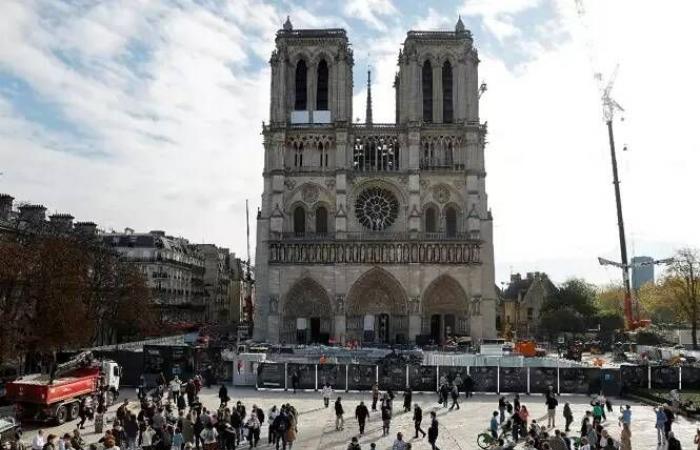Unprecedented in a cathedral in France, this misting mechanism is the trump card used by Notre-Dame during its reconstruction to strengthen its fire protection system.
“The idea was to allow us to react more quickly but above all to ensure that the monument could fight a fire itself”explains to AFP Rémi Fromont, one of the three architects in charge of the Notre-Dame construction site, which reopens on December 7.
On the evening of April 15, 2019, when the flames ravaged the wooden frame of Notre-Dame, the monument’s fire-fighting system showed its limits.
At 6:18 p.m., a fire alert message appeared on the security PC control screen, triggering a general alarm and the evacuation of the premises. But we had to wait two “removal of doubt” by security agents to attest to the presence of flames and notify the firefighters.
Around thirty precious minutes were thus lost, during which the fire, the origin of which remains undetermined to this day, began to pierce the lead roof.
During the reconstruction, the need to completely rethink this fire-fighting system quickly became clear, without however disfiguring the building, a Gothic masterpiece from the 12th century which is among the most visited monuments in Europe.
“After the disaster, we could not only have a heritage response and we could not have a response that only took into account the question of fire safety. We had to work on both.”underlines Rémi Fromont.
Minimize damage
“The first challenge was that it shouldn’t look ugly”Eric Lazzari, of French Electronic Detection (DEF), one of the companies that installed the new fire-fighting mechanism, recently explained to AFP.
The choice therefore fell on a misting system that winds along the medieval framework right into the arrow and is automatically activated in the event of an alert, creating a water mist capable of reducing the ambient temperature by 500°C in one minute and smothering the flames by driving out the oxygen.
This system also has the great advantage of further preserving the places. “The main concern with conventional water extinguishing systems is that the water flows, trickles and causes damage, particularly to wood, whereas misting has the same ability to extinguish the fire but while minimizing the impact”selon Eric Lazzari.
This mechanism, used in data centers or motorway tunnels, has gradually appeared in heritage sites. It equips Saint-Patrick’s Cathedral in New York, the Bristol Old Vic theater in the United Kingdom and the Duchess Anna Amalia library in Germany.
Around fifty thermal cameras
At Notre-Dame, to complete the arsenal, around fifty thermal cameras have appeared to detect abnormal heat sources in places at risk, particularly on electrical panels scattered throughout the building.
By also integrating smoke detectors, Notre-Dame now has more than 300 detection points, according to DEF.
“If you have a circuit breaker burning in an electrical cabinet, the thermal camera will detect that there is a fire in the cabinet and automatically activate the water mist. So nothing can happen without us being aware“certifies Mr. Lazzari.
According to him, in terms of extinguishing capabilities, Notre-Dame has, since the 2019 fire, “from 0 to 100”.
Rémi Fromont is also convinced of the benefits of the new system but assures it with a smile: “I don’t want to test”.






